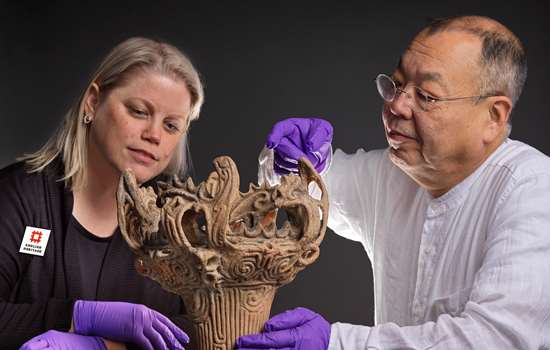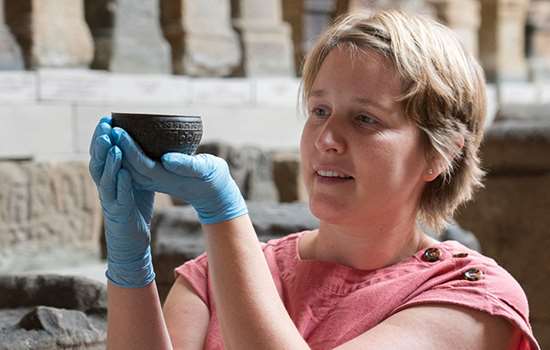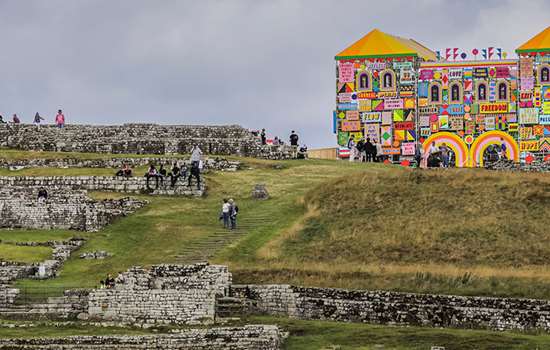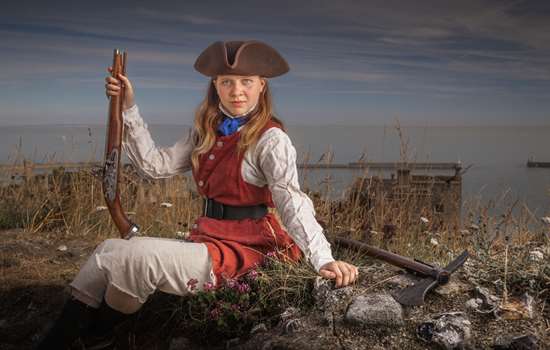07/10/2020
New portrait of Queen Victoria’s African goddaughter goes on display at Osborne
English Heritage commissions portraits of black figures associated with its historic sites to tell previously overlooked stories
A new painting of Sarah Forbes Bonetta, the daughter of an African ruler who became Queen Victoria’s goddaughter, has been unveiled at Osborne, the Queen’s seaside home on the Isle of Wight.
English Heritage will also be commissioning portraits of other historical black figures associated with the charity’s sites, and whose stories like Bonetta’s have been previously overlooked. The painting of Bonetta, by artist Hannah Uzor, is on display at Osborne throughout October – Black History Month – and will then return on display next spring as part of a wider series of portraits across several sites.
The daughter of a West African ruler, Bonetta (originally named Aina) was orphaned and sold into slavery at the age of five. In 1850 she was presented as a ‘diplomatic gift’ to Captain Frederick Forbes of the H.M.S. Bonetta and brought to England. Soon after arriving in England, Forbes introduced her to Queen Victoria who described the seven-year-old as “sharp and intelligent”.
The Queen met Bonetta several times over the next two years, including at Osborne, and was so taken with the young child that she paid for her education and became her godmother. In 1862 Bonetta married a Sierra Leone-born merchant, James Davies, whose own parents were liberated slaves, in Brighton.
Bonetta went on to name her first daughter after Queen Victoria, who also became the child’s godmother. The younger Victoria was travelling to Osborne in 1880 when she heard of her mother’s death in Madeira from tuberculosis and sought comfort from the Queen.
Artist Hannah Uzor said:
"Through my art, I’m interested in exploring those forgotten black people in British history, people such as Sarah. What I find interesting about Sarah is that she challenges our assumptions about the status of black women in Victorian Britain. I was also drawn to her because of the parallels with my own family and my children, who share Sarah's Nigerian heritage.
To see Sarah return to Osborne, her godmother’s home, is very satisfying and I hope my portrait will mean more people discover her story."
In spring 2021, English Heritage will display more portraits of black figures with links to the historic sites in the charity’s care and whose stories have been previously overlooked. Figures such as Rome’s African-born emperor, Septimius Severus, who strengthened Hadrian’s Wall, and James Chappell, an 17th century servant at Kirby Hall in Northamptonshire who saved the life of the Hall’s owner.
Anna Eavis, English Heritage’s Curatorial Director, said:
“There are a number of black figures from the past who have played significant roles at some of the historic sites in our care but their stories are not very well known. Starting with Sarah, our portraits project is one way we’re bringing these stories to life and sharing them with our visitors.”
Black history is part of English history and, while we know we have more to do, English Heritage is committed to telling the story of England in full. Our portraits series celebrating black lives from the past is part of a programme of work that includes in-depth research into the links between the slave trade and the sites in our care. From next year, new interpretation at relevant sites will bring those links to the fore.
For more information about black lives across the centuries in Britain, visit: https://www.english-heritage.org.uk/learn/histories/black-history/
For more from English Heritage, follow us on Twitter, Facebook and Instagram.



